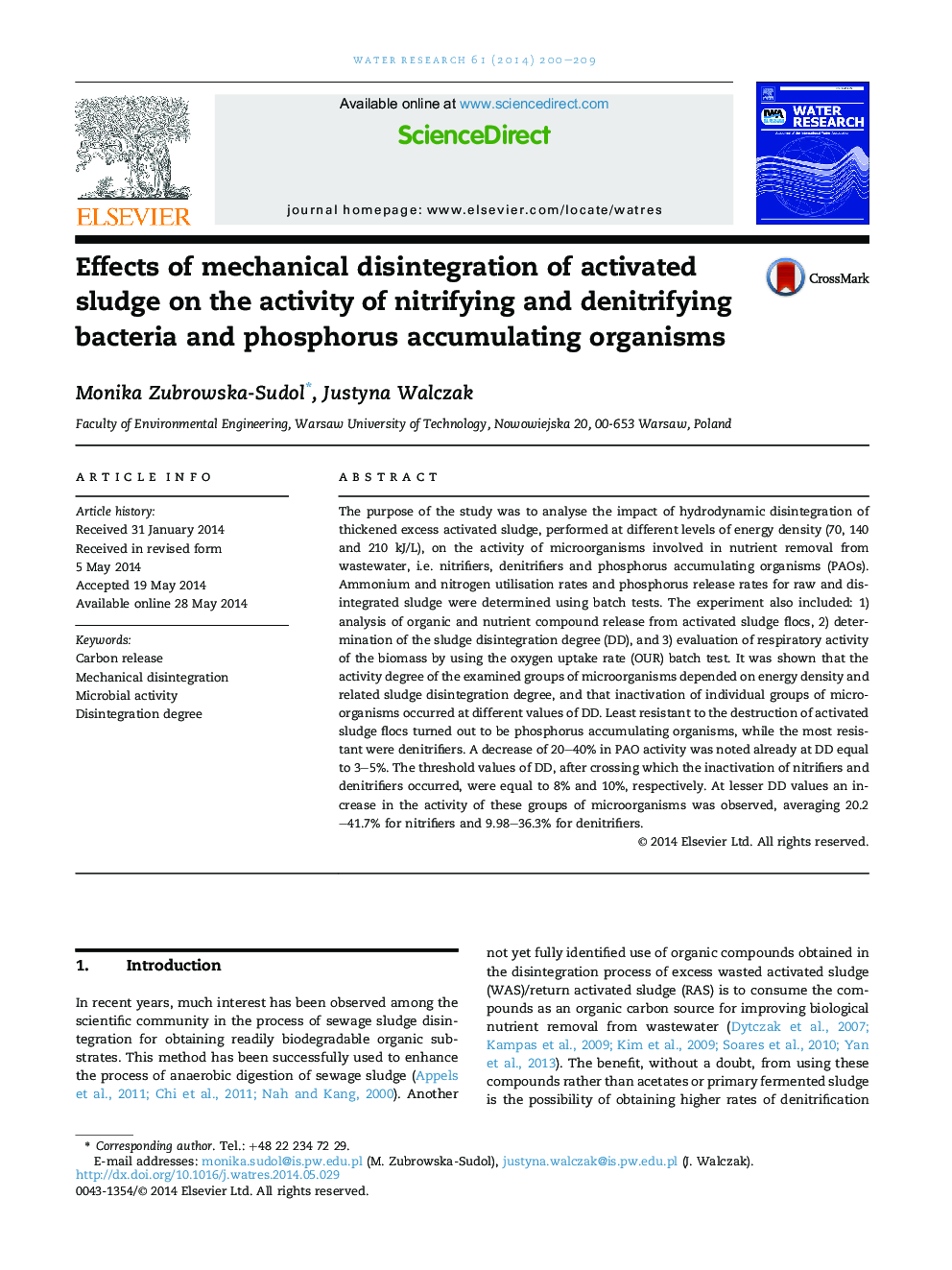| Article ID | Journal | Published Year | Pages | File Type |
|---|---|---|---|---|
| 6366546 | Water Research | 2014 | 10 Pages |
Abstract
The purpose of the study was to analyse the impact of hydrodynamic disintegration of thickened excess activated sludge, performed at different levels of energy density (70, 140 and 210Â kJ/L), on the activity of microorganisms involved in nutrient removal from wastewater, i.e. nitrifiers, denitrifiers and phosphorus accumulating organisms (PAOs). Ammonium and nitrogen utilisation rates and phosphorus release rates for raw and disintegrated sludge were determined using batch tests. The experiment also included: 1) analysis of organic and nutrient compound release from activated sludge flocs, 2) determination of the sludge disintegration degree (DD), and 3) evaluation of respiratory activity of the biomass by using the oxygen uptake rate (OUR) batch test. It was shown that the activity degree of the examined groups of microorganisms depended on energy density and related sludge disintegration degree, and that inactivation of individual groups of microorganisms occurred at different values of DD. Least resistant to the destruction of activated sludge flocs turned out to be phosphorus accumulating organisms, while the most resistant were denitrifiers. A decrease of 20-40% in PAO activity was noted already at DD equal to 3-5%. The threshold values of DD, after crossing which the inactivation of nitrifiers and denitrifiers occurred, were equal to 8% and 10%, respectively. At lesser DD values an increase in the activity of these groups of microorganisms was observed, averaging 20.2-41.7% for nitrifiers and 9.98-36.3% for denitrifiers.
Related Topics
Physical Sciences and Engineering
Earth and Planetary Sciences
Earth-Surface Processes
Authors
Monika Zubrowska-Sudol, Justyna Walczak,
